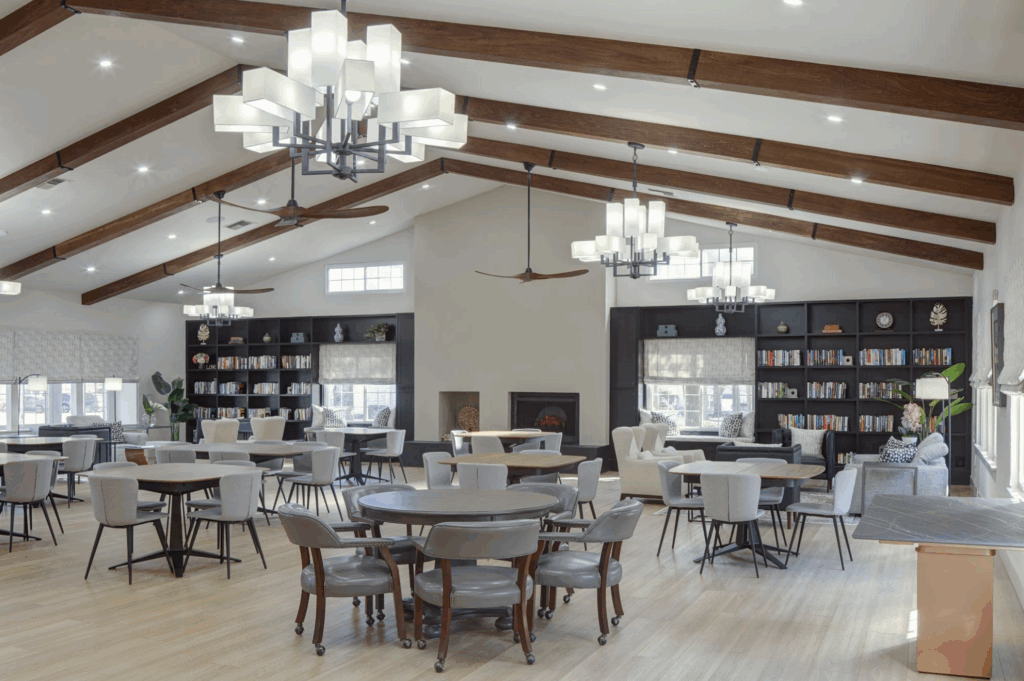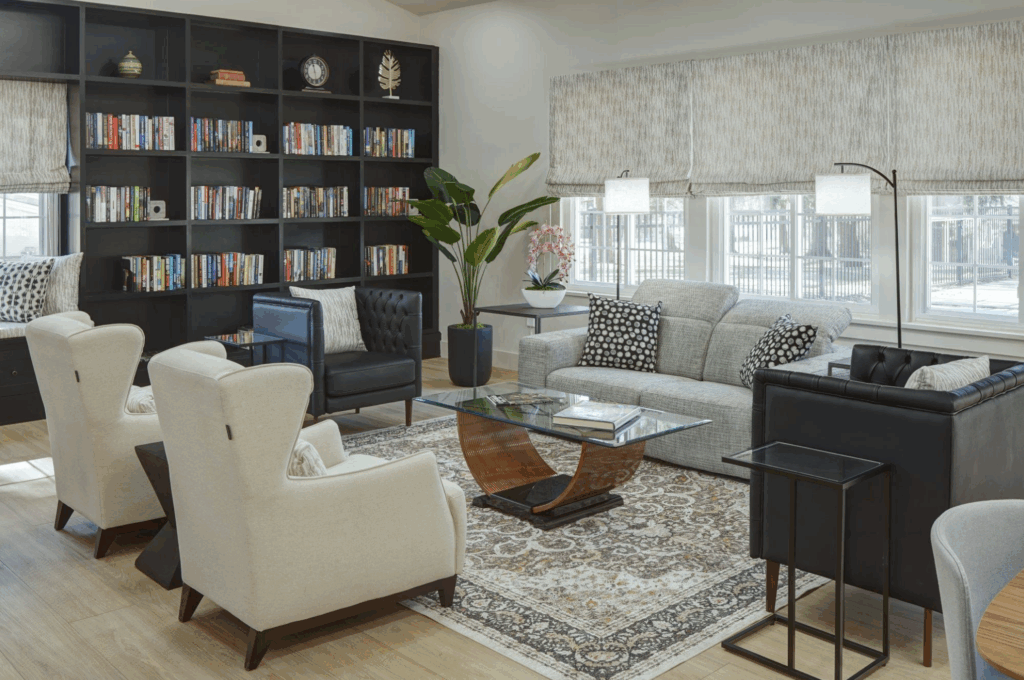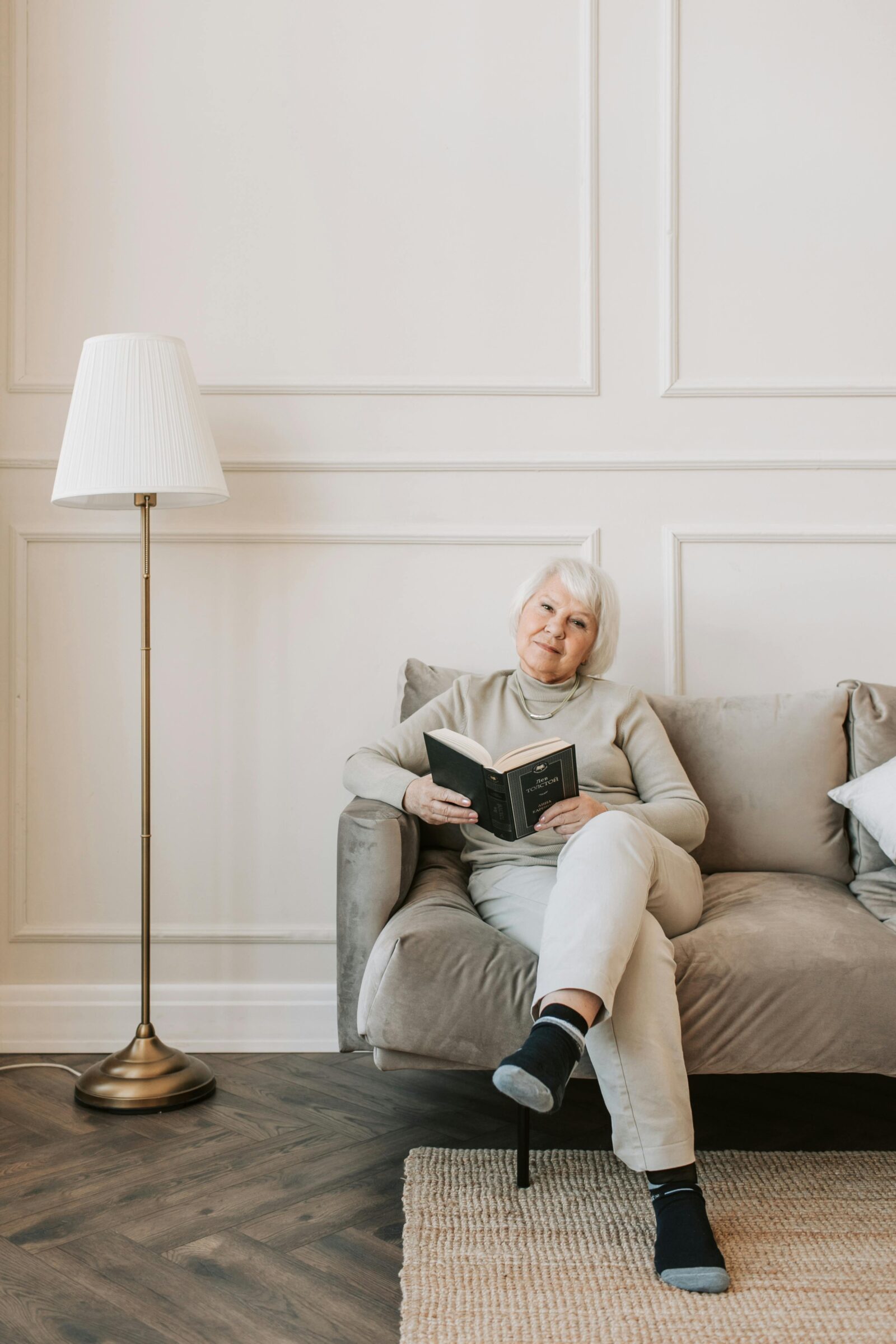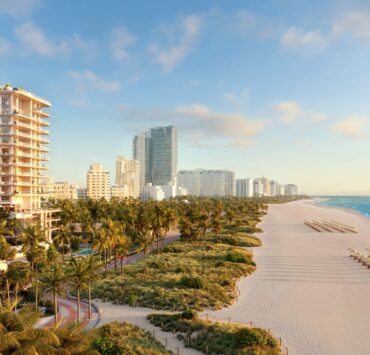When renovating the clubhouse at Shady Oaks, an active adult community in Red Bank, New Jersey, Anna Maria Mannarino wanted to address form and function, creating an inviting, adaptive centerpiece of the community for folks 55 and older.
Out went a dated brick fireplace; in came a fresh skim coat and a slate-topped hearth for a contemporary look to the focal point. Old carpet was replaced by wide-plank composite flooring for durability and visual flow. Mannarino, founder of New York-based Mannarino Designs Inc., installed new lighting fixtures throughout, and added wood beams to the vaulted ceiling, as well as trim to flat-panel doors. A new palette of light neutrals, warm walnut finishes and rich cognac details bring airiness and sophistication to the space.


Photos by Wing Wong/Memories TTL
With an eye toward function, Mannarino created bespoke bookcases with window seats to frame the space, add seating and provide extra storage, and she installed a dual-purpose game table that flips for poker or other uses. Built-in charging stations are an appreciated touch, as are expandable tables with self-storing leaves that replace folding tables and eliminate the need for regular setup and take down between events.
A member of the New Jersey chapter of the American Society of Interior Designers, the project recently earned Mannarino her 40th design award from the organization.
The project is an example of a sector ripe for designers who are looking to expand their hospitality business. Communities for people age 55-plus attract active older residents with their amenities — and, in a competitive market, need to keep those spaces inviting and up to date.
The clubhouse at Shady Oaks, for instance, is the center of activities for residents of a community with 366 condos and townhomes, used for dining, games, exercise, movie nights and community events. It’s where the “active” happens. (Owners of the clubhouse also note that the upgrade has increased the venue’s value as a rental space for outside events, increasing revenue. Win-win.)
The project also reminds us that, although they are concentrated in warmer climates, there are 55-plus communities throughout the United States.
Baby boomers, often flush with disposable income and living longer than previous generations, have driven the growth of 55-plus communities, starting when many began taking early retirements 25 years ago. I have family members living among 150,000 other retirees in The Villages. 150,000 retirees! The community spreads across a few counties and 57 square miles in Central Florida. Talk about opportunities for design work: The Villages has three centers designed like town squares, replete with shopping, dining and entertainment options, along with golf clubhouses, recreation centers and other communal facilities scattered liberally throughout the entire community.
According to 24/7 Wall St., an analysis and commentary website for global equity investors, The Villages is the largest active retirement community in the country. Other behemoths, include:
* Sun City in Arizona. Billed as the oldest active retirement community in the United States, it has 27,000 homes
* Sun City West in Arizona, with 17,000 homes
* Green Valley Recreation in Arizona, with 13,000 homes
* Laguna Woods Village in Southern California, with 12,736 homes
* On Top of the World in Central Florida, with 10,000 homes planned
* Sun City Grand in Arizona, with about 9,800 homes and condos
* Sun City Hilton Head in South Carolina, with about 8,200 homes
* Sun City Summerlin near Las Vegas in Nevada, with 7,779 homes
The 55-plus activity community market was valued at $587.7 billion in 2022, according to Grand View Research, and is expected to grow about 4% a year through 2030 as boomers continue to retire.
Some trends may be dampening consumer demand for active retirement communities long-term. The baby boomers who drove growth in the communities are aging, with many now moving into assisted living and skilled nursing facilities or relocating to be closer to children and grandchildren. And it’s unclear if Gen X will have the same desire or financial wherewithal to retire early en masse to such communities. Even if they do, it’s a much smaller generation than the boomers.
But even that could have a silver lining for interior designers interested in tapping into this market, because existing 55-plus communities will have added incentives to entice residents in what could be an increasingly competitive market. Such communities might even shift their focus to become more family-friendly — and that would require major renovations of communal spaces.
But for now, if The Villages is any indication, 55-plus communities are still growing fast. I visit family there once or twice a year and every time, we take a tour of the new neighborhoods being built. There is never a shortage of new “villages” — and communal activity centers — to see.



